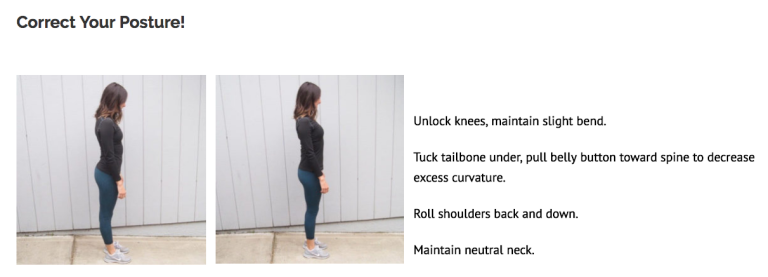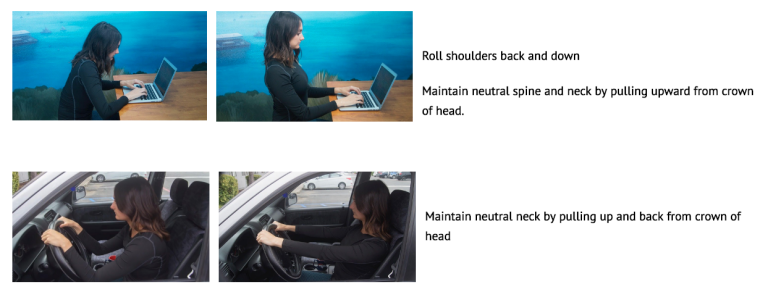HOW YOUR POSTURE MAY BE RUINING YOU!
Jaimi Jansen, Santa Cruz Waves
March 15, 2018
HAVE HEARD THE SAYING, “SITTING IS THE NEW SMOKING.”
If we take a look at the modern American lifestyle, it’s obvious that sitting now dominates much of our daily activity. From meals to jobs to entertainment and transportation, sitting is a large part of both home, work and social life. A sedentary lifestyle is associated with weight gain, which can lead to an increased risk of developing preventable cardiovascular-related diseases. However, the extra weight also puts more stress on our bones and joints. Plus we can move how we want to, we tend to injure easier and feel tight all the time!
Studies have revealed that prolonged sitting increases the risk of developing several serious illnesses. Illnesses include various types of cancer, heart disease, and Type 2 diabetes. Decreased physical activity takes a major toll on our musculoskeletal system as well.
WHAT HAPPENS TO OUR BODY WHEN WE SIT?
Prolonged sitting causes the hip flexors, the muscles in the front of your hips, to become tight. This can offset posture and lead to lower back pain. Lower back pain is a chief complaint among more than 70% of the population in the US, according to the World Health Organization. Not only that, it is the leading cause of activity limitation and work absence throughout much of the world. In addition, it allows the core muscles, both anterior (abdominals) and posterior (back muscles), to become weak. Weak core muscles make it difficult to maintain good posture, balance, and prevent injury.

Sitting can also take a toll on the muscles of the neck and upper back, especially if a lot of time is spent working in front of a computer. Many end up craning their neck to look at a screen or type on a keyboard. This posture causes the muscles of your neck to support the extra weight of your head. This can result in headaches, neck aches, backaches, and radiating pain to other areas of the body. Muscles of the chest and shoulders can also become excessively tight as a result of poor posture. The result of all of these negative effects on the musculoskeletal system is weak and easily fatigued muscles, muscle imbalances, and chronic pain.
WHY GOOD POSTURE SUPER IMPORTANT?
Good posture is necessary for maintaining overall health and wellbeing. However, it can also prevent injury and chronic pain down the line. This ultimately reduces the number of days absent from work and normal daily activities. Wherever you are, small adjustments can be made to improve posture and benefit your body long term. Benefits include reduced pain, improved mood, and decreased risk of injury. Likewise, if you spend a significant amount of time standing, small improvements can be made to prevent harm to the musculoskeletal chain.
Improving your posture is a habit that at first requires conscious thought. But like riding a bike or playing an instrument, the more you practice, the more it becomes second nature. These following adjustments to practice throughout your day can significantly improve posture, reduce your risk for muscular imbalances, injury, and chronic pain. This can ultimately lead to a better quality of life, pain-free!
WORKPLACE SOLUTIONS:
There are many simple workplace solutions which can improve one’s posture. One solution is to use a standing desk. Standing desks allow you to adjust your workstation in such a way that encourages good posture. You are therefore less likely to develop tight muscles and other problematic conditions such as carpal tunnel.
Investing in a quality desk chair is another step that can be taken in order to ensure that when sitting, your back and abdominal muscles are positioned in a way that engages them without creating an imbalance due to slouching. Chairs with a built-in lumbar support, specifically those with a curve in the lower back, support the natural curvature of the spine. Postural control muscles can then be engaged, whereas poorer quality chairs that encourage slouching allow the muscles to disengage and weaken.
Sitting on a blow-up exercise ball provides a similar solution in that it forces you to sit more upright and engage the muscles of the spine and core. By keeping the muscles of the spine and core engaged with these simple changes, you’ll stay more alert and burn more calories throughout your day!
GET MOVING!
Walk or bike instead of driving whenever possible. You’ll save money on gas, get your heart rate up, improve muscle endurance, burn more calories, and spend less time seated! Take short breaks throughout your day to stand up, stretch, and walk around.


Sources:
RECENT ARTICLES
Dylan Carter
Chelsea Hodges
Lorenzo Zazzeri

Introducing the Stability Snorkel Jr
Share on Social Media


